Kingdom Plantae Subfamily Orchidoideae Subtribe Drakaeinae Order Asparagales | Family Orchidaceae Tribe Diurideae Rank Genus | |
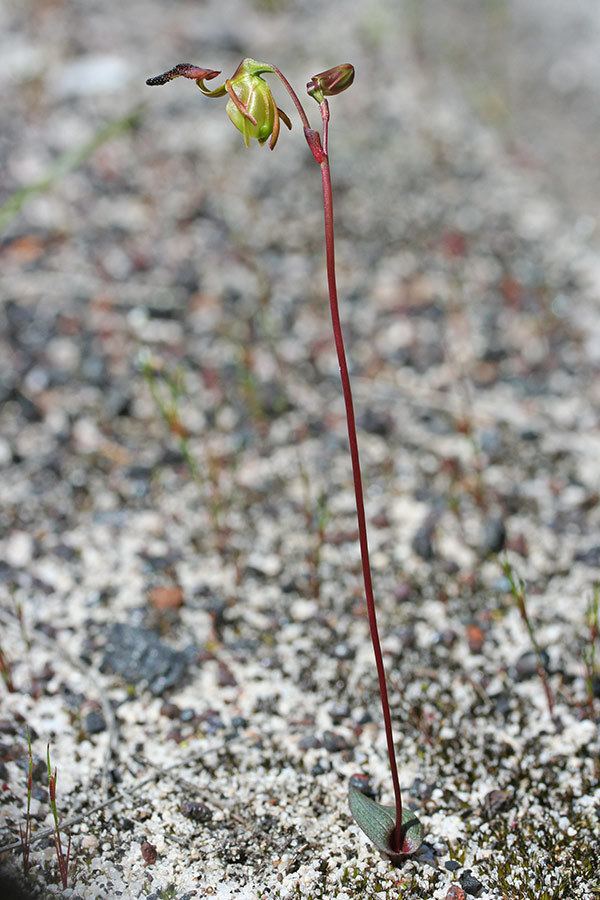 | ||
Similar Arthrochilus, Spiculaea, Leporella, Eriochilus, Drakaea | ||
Paracaleana commonly known as duck orchids, is a genus of flowering plants in the orchid family, Orchidaceae that is found in Australia and New Zealand. The Australian species are found in all states but have not been recorded in the Northern Territory. Orchids in this genus are similar to Caleana major, but there are differences in the flowers and in the insects that pollinate them. Paraceleana orchids, as well as hammer orchids (Drakaea) are pollinated by male thynnid wasps. Duck orchids have a single leaf and one or a few, dull-coloured, inconspicuous flowers.
Contents
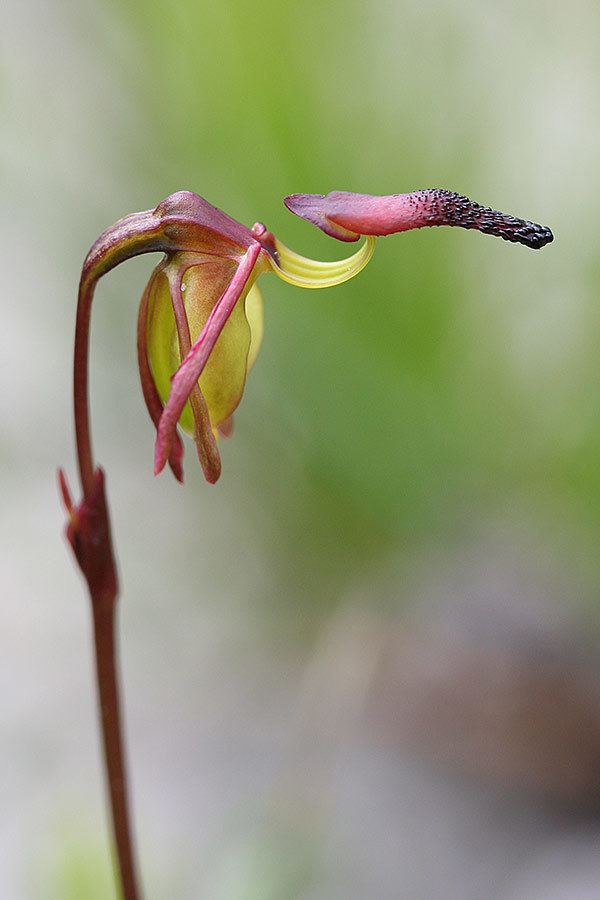
Description
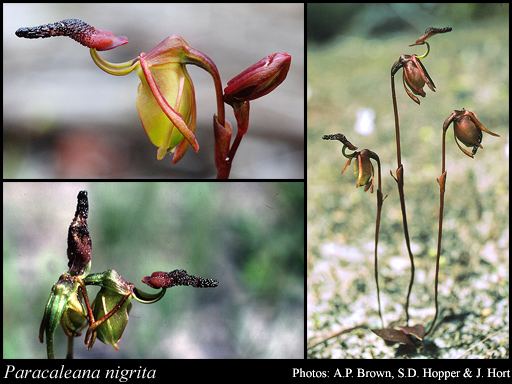
Orchids in the genus Paracaleana are terrestrial, perennial, deciduous, sympodial herbs usually with a few inconspicuous, fine roots and a dark red, oval-shaped, tuber. Replacement tubers called "droppers" form at the end of long root-like stolons. A single leaf 1–4 cm (0.4–2 in) long develops near the base of the plant during the growing season and withers late in the flowering season. The leaf is linear to heart-shaped, dark green above with maroon lines and markings and is dark maroon below.
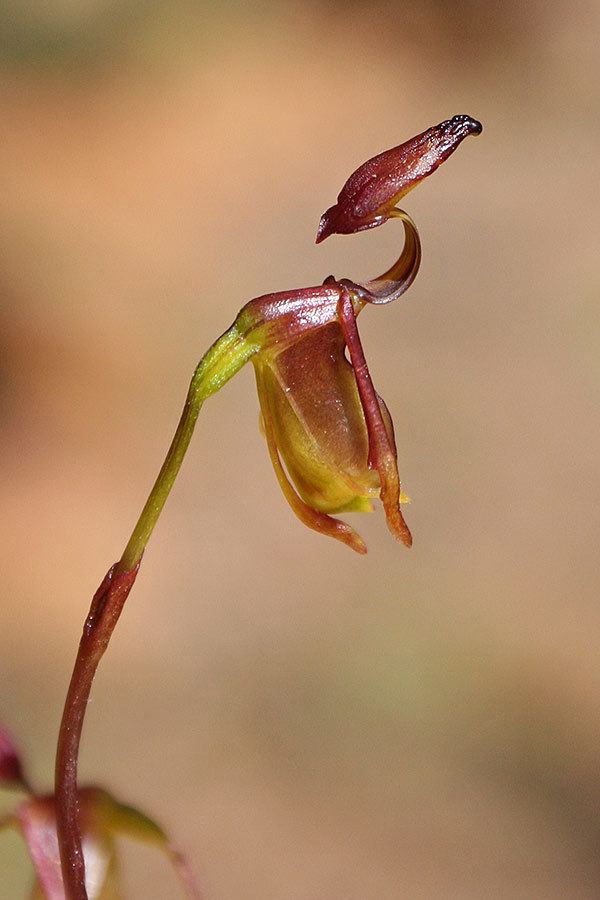
The flowering stem is wiry, dull brownish maroon and bears one to a few flowers each on a stalk 5–20 mm (0.2–0.8 in) long, each with a small leaf-like bract. The flowers are non-resupinate and glabrous. The dorsal sepal and the two lateral petals are similar in size and are narrow linear in shape with pointed or club-shaped ends. The dorsal sepal points downwards and is pressed against the column. The lateral sepals and two petals usually spread obliquely downwards and sideways. The dorsal sepal and petals are attached to the base of the column where it joins to the ovary. As is usual in orchids, one petal is highly modified as the central labellum. Duck orchids have an unusual, insect-like labellum which flicks over when touched. The labellum is attached to the column by a flexible "claw" which bends under the weight of a pollinating wasp. The labellum is flask-shaped, narrowing near the end with the narrow end covered with small raised calli or glands which are usually black, but may be maroon or greenish. In some species the calli may cover a greater part, or even all of the labellum (as in P. minor). Glands on the labellum emit pheromones which are sexual attractants for male thynnid wasps. The sexual parts of the flower are fused to the column which has broad wings along its length, forming a cup-like basket. Flowering occurs in spring in most species and is followed by the fruit which is a non-fleshy, dehiscent capsule containing up to 500 seeds.
Taxonomy and naming
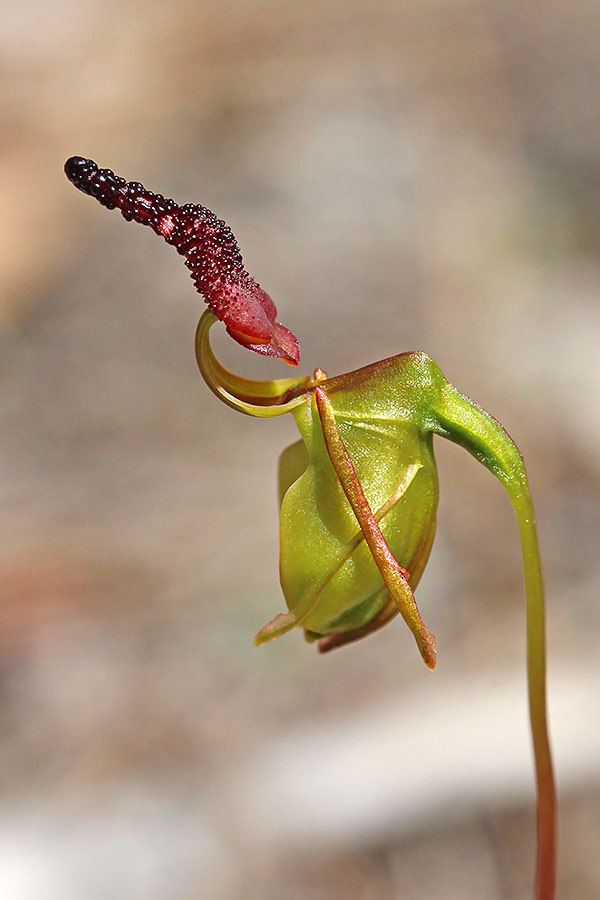
The genus Paracaleana was first formally described by Donald Frederick Blaxell in 1972 and the description was published in Contributions from the New South Wales National Herbarium. The name Paracaleana refers to the similarity of this genus to the closely related genus Caleana, (para being an Ancient Greek prefix meaning "near") in turn named to honour the botanist George Caley.
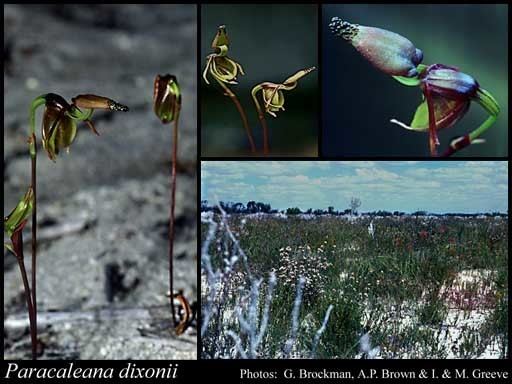
Blaxell originally separated Paracaleana from Caleana on the basis of flower structure and many taxonomists (such as Kores and others (2001)) accepted the change. When Mark Clements suggested that "none of these characters is sufficiently significant to maintain Paracaleana as a separate genus", some authorities such as the National Herbarium of New South Wales were in agreement with Clements. It has since been found that orchids in Paracaleana are pollinated by male thynnid wasps and that the remaining species in Caleana is pollinated by male sawflies. Having different pollinators accounts for differences in flower structure and lead to the two genera being reproductively isolated from each other and the name Paracaleana is now widely accepted.
Distribution and habitat
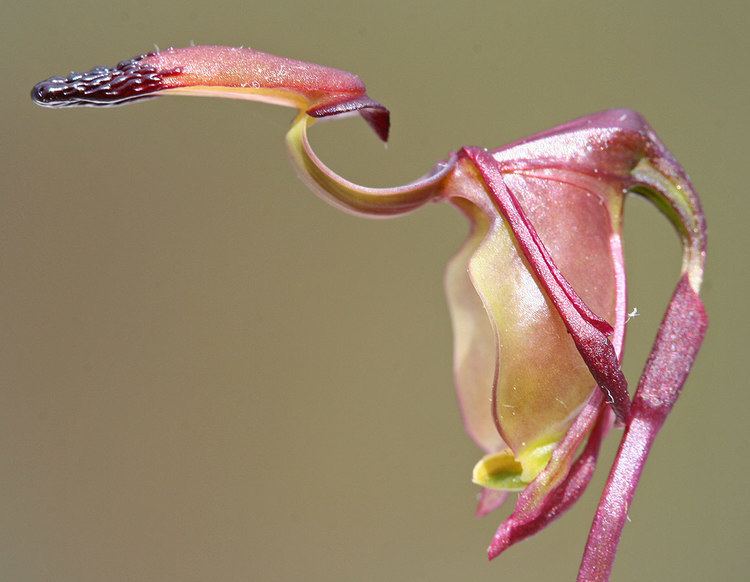
The Westen Australian duck orchids usually grow in sandy soil near areas that are swampy in winter where they often grow with hare orcids (Leporella), hammer orchids (Drakaea) and beak orchids (Pyrorchis). P. minor, which grows in eastern Australia and New Zealand grows in sand in woodland, damp heath shrubland and grassland, sometimes on rocky slopes or in gravelly soil or on road verges.
Ecology
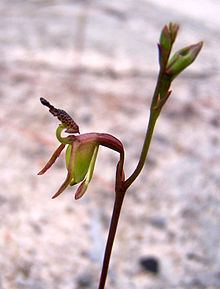
Orchids in the genus Paracaleana are pollinated by male thynnid wasps which are attracted to the flower by pheromones. When a wasp lands on the labellum, in its attempt to copulate with it, the labellum is flipped over against the column. If the flower has not previously been visited, pollinia in the column will adhere to the insect's back. When that insect visits another duck orchid and the process is repeated, the transported pollinia will adhere to the stigma of the second flower and it will be pollinated.
Species
Species accepted by Kew Garden as of June 2016:
